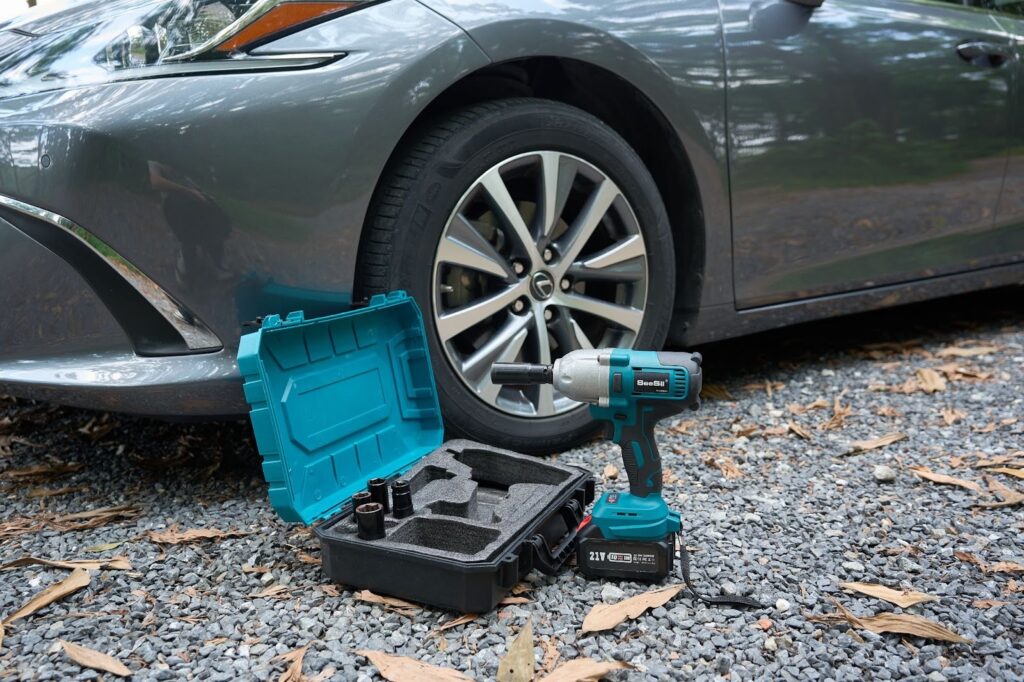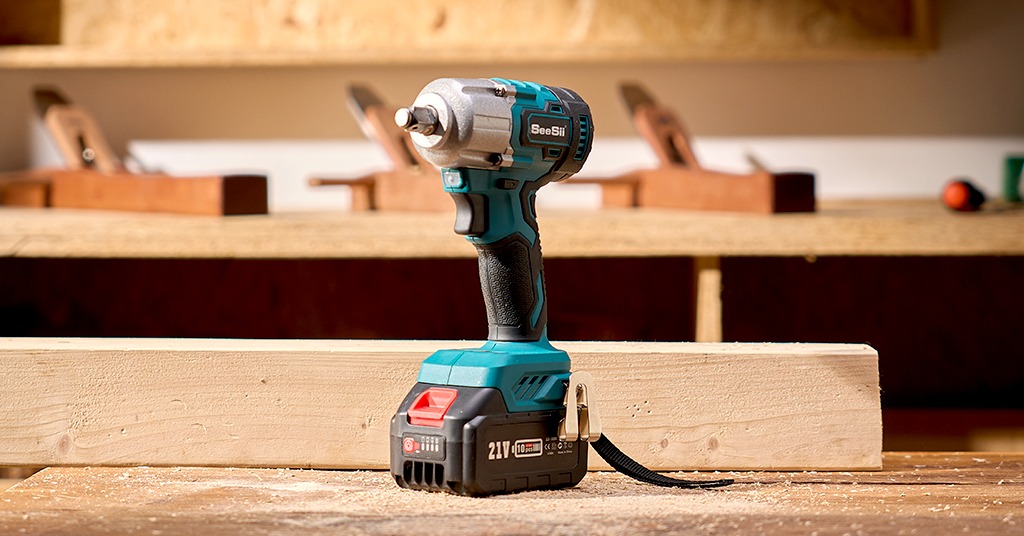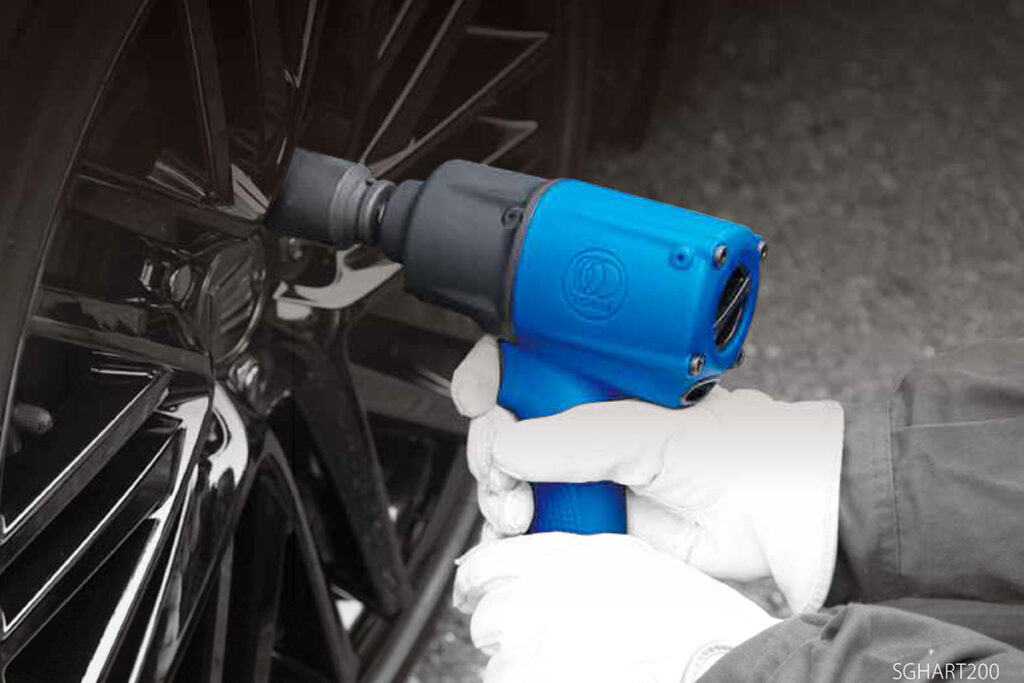Ever grabbed an impact wrench and paused for a moment, wondering if you’re about to over-tighten a bolt or strip a thread? Don’t worry—you’re not the only one. An impact wrench is powerful, and a bit of guidance goes a long way in using it safely and effectively.
Whether you’re rotating your car tires, assembling a scooter, or doing quick maintenance on your e-bike, this guide will walk you through everything you need to know. From setup and torque control to simple safety habits, you’ll learn how to handle an impact wrench with confidence and precision.
Here’s a quick comparison before we start:
| Type | Power Source | Best For | Torque Range |
| Cordless (Battery) | Rechargeable battery | Car maintenance, e-bike repair, scooter work | 150–500 ft-lbs |
| Pneumatic (Air) | Air compressor (90–120 PSI) | Auto shops, industrial use | 300–1,000+ ft-lbs |
| Corded (Electric) | Plug-in outlet | Occasional home projects | 200–450 ft-lbs |
Understanding the Role of an Impact Wrench
What Makes It Different
An impact wrench delivers quick, hammering bursts of torque—making it perfect for loosening stubborn fasteners or tightening heavy bolts.
It’s widely used for automotive wheels, scooter axles, and metal assembly work where extra torque is essential.
When to Use It
Use an impact wrench when you need high torque and speed:
- Changing car or scooter tires
- Removing rusted or seized bolts
- Performing quick assembly jobs on vehicles or metal frames
Avoid it for delicate parts such as aluminum housings or plastic covers, which can easily be damaged by excessive torque.

Choosing the Right Impact Wrench
Cordless, Pneumatic, or Corded
- Cordless: Portable and easy to handle. Great for car owners and scooter riders who need flexibility.
- Pneumatic: Requires an air compressor. Delivers the most consistent power—ideal for professionals.
- Corded: Budget-friendly and reliable for light work but limited in mobility.
Select the Proper Drive Size
| Drive Size | Typical Use | Example |
| 3/8” | Light-duty | Scooter or e-bike maintenance |
| 1/2” | Standard automotive | Tire changes, brake jobs |
| 3/4”–1” | Heavy-duty | Truck or industrial equipment |
Choosing the proper drive size ensures you have enough torque for the job without adding unnecessary weight or risking damage to the fasteners.
Preparing for Safe Operation
Essential Setup Checklist
- Impact wrench (charged or connected to air)
- Impact-rated sockets (never chrome ones)
- Torque wrench for final tightening
- Penetrating oil for stuck bolts
- Gloves, safety glasses, and ear protection
If You’re Working on a Vehicle
- Park on level ground and engage the parking brake.
- Use wheel chocks to secure the vehicle.
- Lift it using a jack and secure with jack stands—never rely only on a jack.
- Keep your tools organized to prevent tripping or confusion.
How to Use an Impact Wrench Step by Step
1. Choose the Correct Socket
Ensure the socket fits tightly on the nut or bolt. Loose sockets can slip and damage fasteners.
2. Set the Right Direction
- Forward (tighten) pushes bolts in.
- Reverse (loosen) removes them.
Always confirm direction before pulling the trigger.
3. Loosen Tight Bolts
- Spray penetrating oil and wait a few minutes.
- Hold the wrench firmly with both hands.
- Use short bursts, not continuous force.
- For rusted bolts, apply light heat or tap gently to break the corrosion.
4. Tighten Carefully
- Start threading by hand to avoid cross-threading.
- Use short bursts until snug—don’t max out the trigger.
- Switch to a torque wrench for the final torque according to specs.
- Tighten lug nuts in a star pattern to ensure even pressure.
5. Recheck After Driving
After driving 30–60 miles (50–100 km), retorque your lug nuts to confirm nothing has loosened.

Common Mistakes to Avoid
Over-Tightening
Using full power can strip threads or snap studs. Always finish tightening with a torque wrench.
Wrong Socket Type
Chrome sockets can shatter under impact. Use only impact-rated sockets.
Incorrect Angling
Keep the wrench straight to avoid rounding bolts or hurting your wrist.
Ignoring Tool Condition
Low battery, poor air pressure, or internal wear can reduce torque and cause tool failure. Check before use.
Maintenance and Storage Tips
- Clean the wrench after use and store it in a dry place.
- For air tools, add a few drops of air tool oil before and after each session.
- Keep batteries at a partial charge if storing long-term.
- Inspect sockets and bolts regularly for cracks or wear.
Using an Impact Wrench to Tighten Lug Nuts: Safety Tips
| Safety Tip | Description |
| Wear Protective Gear | Always wear safety glasses and ear protection to protect from debris and noise. |
| Inspect the Tool Before Use | Check for damage, leaks (pneumatic), or loose parts before starting. |
| Use the Correct Socket Size | Loose sockets can damage lug nuts or cause injury—use the right impact socket. |
| Start With Lower Torque | Begin with a low torque setting and increase gradually as needed. |
| Keep the Work Area Clean | Clear tools and clutter to move freely and work safely. |
| Don’t Rush the Job | Maintain a stable posture and work slowly to avoid strain or injury. |
| Follow Manufacturer Guidelines | Read the user manual for recommended torque and usage. |
| Check Torque Regularly | Always confirm final torque with a torque wrench. |
| Keep Bystanders Away | Make sure others stay a safe distance from your work area. |
FAQs About Impact Wrenches
1. Can I fully tighten lug nuts with an impact wrench?
No. Use it to snug them, then finish with a torque wrench for accuracy.
2. What’s the difference between an impact wrench and an impact driver?
An impact driver is for screws (¼” hex), while a wrench handles larger bolts (½” square).
3. Can I use it for my e-bike or scooter?
Yes, but use low torque and correct sockets—avoid small or delicate parts.
4. Why won’t it loosen my bolt?
Try a more penetrating oil, charge the battery, or increase air pressure for pneumatic types.
5. How often should I oil my air wrench?
Before and after each use, just a few drops extend tool life.
Conclusion
Mastering an impact wrench is about more than power — it’s about precision and safety. Take the time to prepare your tools, start with lower torque, and always finish with a torque wrench for accuracy. Whether you’re changing tires, fixing your e-bike, or tackling weekend projects, these steps help you work smarter and safer. With the right habits, your impact wrench becomes a reliable partner for years of smooth, confident performance.
